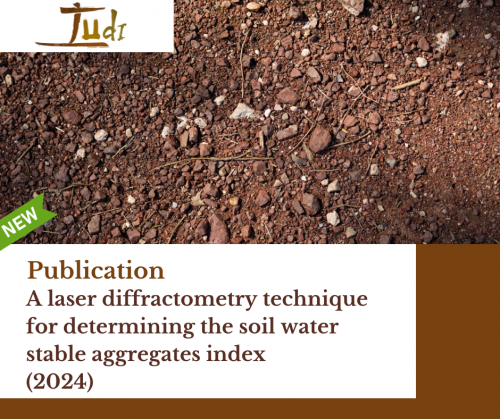TUdi article: A laser diffractometry technique for determining the soil water stable aggregates index
Published in 2024, in “Geoderma - The Global Journal of Soil Science”, and available in the TUdi library, is the article “A laser diffractometry technique for determining the soil water stable aggregates index”, written by Michal Vrána, Jan-František Kubát, Petr Kavka and David Zumr.
The article presents a study introducing the Sonication and Laser Diffractometry technique (SLD), developed for the purpose of evaluating how stable soil aggregates (clumps or groups of soil particles) are. The stability of these aggregates is important because it influences soil structure, water infiltration, and erosion. The SLD technique combines two methods: sonication for breaking down aggregates and laser diffractometry for measuring the particle size distribution. The study compares this technique with the conventional Wet Sieving (WS) method, which also evaluates the stability of soil aggregates, but this time by assessing how well they hold together when subjected to water. The SLD technique utilises ultrasound and particle movement, making it effective for fine soils, whereas the WS method faces challenges like sieve screen clogging.
Results from the comparison revealed that the water aggregates stability index (WSAi) determined using SLD is consistent with values obtained from WS and has good reproducibility. SLD was shown to offer advantages in speed (with results ready in only a few minutes, compared to the days required for WS), simplicity, and a lower potential for human error.
Further research remains to be done in relation to the adaptability of the methodology to different soil types and equipment. Nevertheless, the potential of SLD as an efficient and reliable method for assessing aggregate stability in soils stands.
